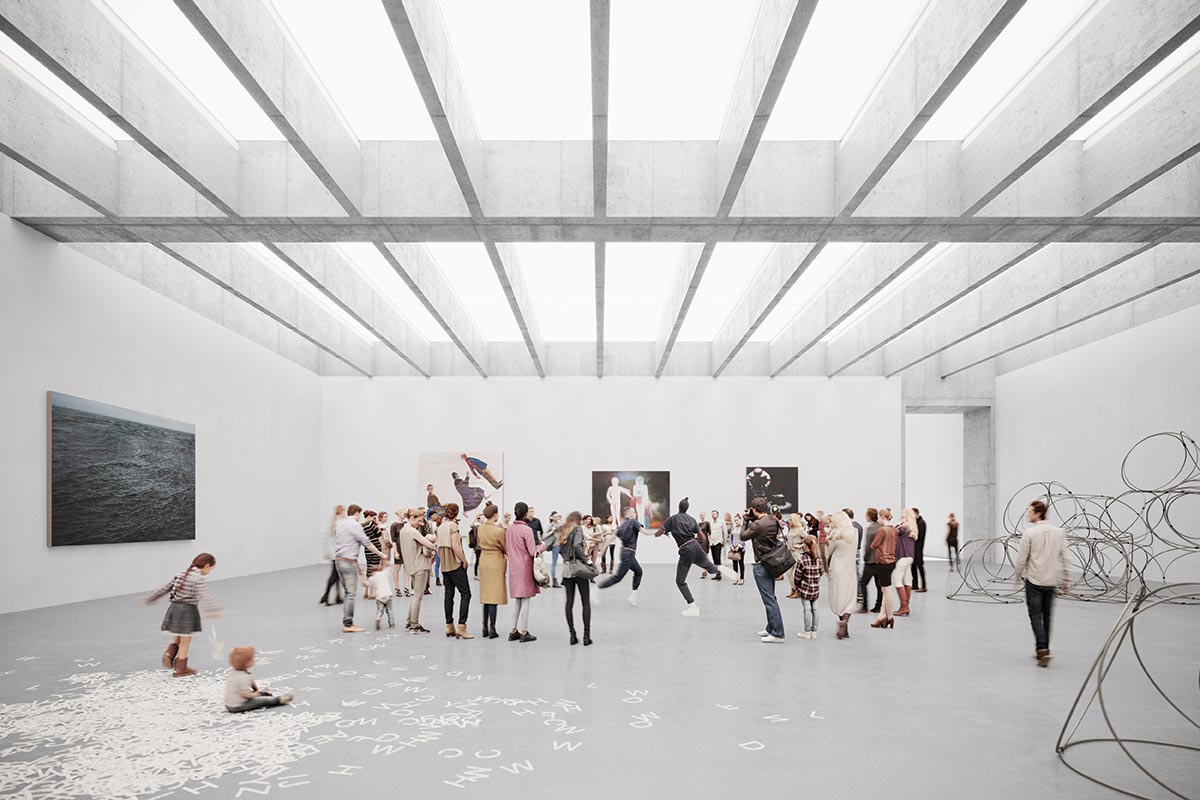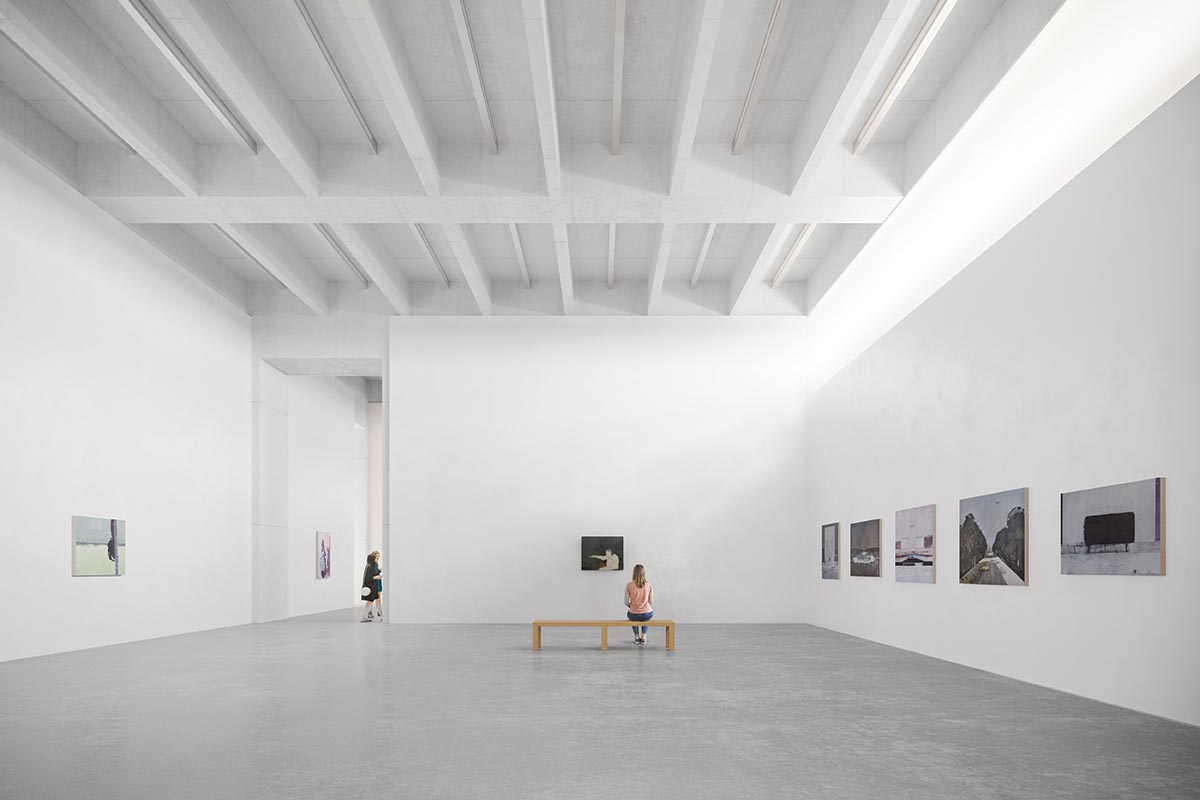Daylighting in Museums
Learning Objectives:
- Explain how daylighting can enrich the experience of viewing art.
- Describe various daylighting configurations and their visual effects.
- Discuss the integration of daylighting and electrical-lighting systems.
- Discuss the maintenance, curatorial, and conservation considerations that must be taken into account when daylighting spaces for the display of art.
Credits:
This course is approved as a Structured Course
This course can be self-reported to the AANB, as per their CE Guidelines
Approved for structured learning
Approved for Core Learning
This course can be self-reported to the NLAA
Course may qualify for Learning Hours with NWTAA
Course eligible for OAA Learning Hours
This course is approved as a core course
This course can be self-reported for Learning Units to the Architectural Institute of British Columbia
View course on architecturalrecord.com »

IMAGE: COURTESY THOMAS PHIFER AND PARTNERS
Warsaw’s modern art museum, designed by Thomas Phifer and Partners, was conceived to take advantage of the city’s ever-changing light.
When I recall my favorite art museums—drifting through their galleries, pausing, reflecting, moving on—it’s not so much specific works of art I remember, if I’m honest: it’s the beauty of the light. Daylight that hovers, shimmering, almost palpable, in a volume of space; that washes a wall just so, depending on weather and time of day; that, glimpsed through a window in passing or pausing, sets a city or landscape outside aglow: this is what distinguishes the museums I’ve already forgotten (however worthy) from the sublime spaces I seek out again and again. Daylighting an art museum is an art in itself.
“Daylighting is one of the most potent experiences that people have when they walk into a gallery,” says Susan Ubbelohde, a founding partner with Loisos + Ubbelohde, building-performance design consultants. “You need technical knowledge to make it work well and not damage the artwork, but it is not a technical objective. Good daylighting is an experiential and aesthetic goal.”
Three new art museums exemplify different approaches to that objective: the Museum of Modern Art Warsaw, by Thomas Phifer and Partners (completing in 2024); an addition to the Musée national des beaux-arts du Québec (MNBAQ), by FABG Architectes (construction drawings ready for bid); and the renovation and expansion of the Frick Collection, in New York, by Selldorf Architects (under construction). I spoke with architects and lighting designers for these projects about the factors that informed their approach to daylighting. Before that, I spoke with Gabe Guilliams, a partner with Buro Happold who leads the firm’s lighting teams globally, and he offered five themes from his pantheon of best practices, which I’ve distilled into a sort of checklist (see sidebar). Remember when you went to an art museum as a kid, and the docent sent the class on a scavenger hunt for how many hats or games or reflections you could spot in the paintings? Similarly, you might see how many of Guilliams’s daylighting themes you can spot in these museums.

IMAGE: COURTESY THOMAS PHIFER AND PARTNERS
Wood-lined rooms will offer a place to pause between the art-display spaces.
The Museum of Modern Art Warsaw, located in the center of the city (with an adjacent theater, also by Thomas Phifer and Partners), is intended as a catalyst for Poland’s artistic voice during the country’s current renaissance, says Thomas Phifer, the firm’s founding partner. “To celebrate this moment, it is vital to weave the art experience with the ever-changing light of Warsaw,” he says.
Unlike many museums designed in the last 10 or 15 years, this is not a museum that wanted flexibility to “change and change and change,” says Phifer. “The museum director, Joanna Mytkowska, requested permanent rooms that will in themselves serve to curate the art.”
The 213,000-square-foot, three-story museum, built of white concrete inside and out, comprises four suites of galleries on the top two floors, with education and gathering spaces and changing, artist-curated exhibits in the gallery on the ground floor. In each of the four gallery suites, about halfway through, a wood-lined room, complete with bench and reading desk, offers a place to pause, contemplate, and reset in front of an outsize window with views of the city.

IMAGES COURTESY THOMAS PHIFER AND PARTNERS
The museum of Modern Art Warsaw will offer galleries daylit by skylights and clerestories.

Top-floor suites, with ceiling heights of 26 feet, are skylit, which “gives the art a kind of heroic nature,” says Phifer. A system of fixed louvres and scrims modulates the toplight, and computer modeling, by Arup, has confirmed that across all seasons the filtered daylight achieves an average illuminance specified by the museum’s curators and conservators. If, from time to time, an exhibition requires further modulation, an easy-to-use film, available in varying degrees of opacity, can be applied to the skylight. “Movable parts that would take a lot of maintenance were not acceptable,” says Phifer. “We wanted to allow change with only static devices.”
On the second floor, one of the two suites of galleries, with similarly heroic ceiling heights, is daylit via clerestory windows wrapping three sides of the building. In the morning, the galleries on the east side are going to be glowing with a “vibrant daylight.” In the afternoon they’ll be quieter, offering “a softer light,” while the ones on the western side “will come alive,” says Phifer. Throughout the day, “the atmosphere of these rooms will change, enriching an art experience that is embedded in the light.”
To allow for the display of especially sensitive works, and to accommodate video installations, the other suite on this floor, with lower (15-foot) ceilings, is lit with electric light only. And, while these black-box galleries serve an essential role, if all of the exhibition spaces were lit with electricity only, “they would resemble generic art spaces that could exist anywhere,” says Phifer. “Instead, as the seasons change and the light of each day passes, the experience poetically connects the art with the atmosphere of Warsaw.”
Placing art in its environment through light and views was also a priority for L’Espace Riopelle, a 61,000-square-foot, mass-timber pavilion at MNBAQ, which will accommodate the largest public collection of works by the 20th-century Canadian painter Jean-Paul Riopelle. “Riopelle was nurtured by our northern landscape,” says Éric Gauthier, a senior partner with FABG, and the painter’s work, particularly the masterwork in the collection, the renowned Tribute to Rosa Luxemburg, “has become important in our collective imagination.”
















